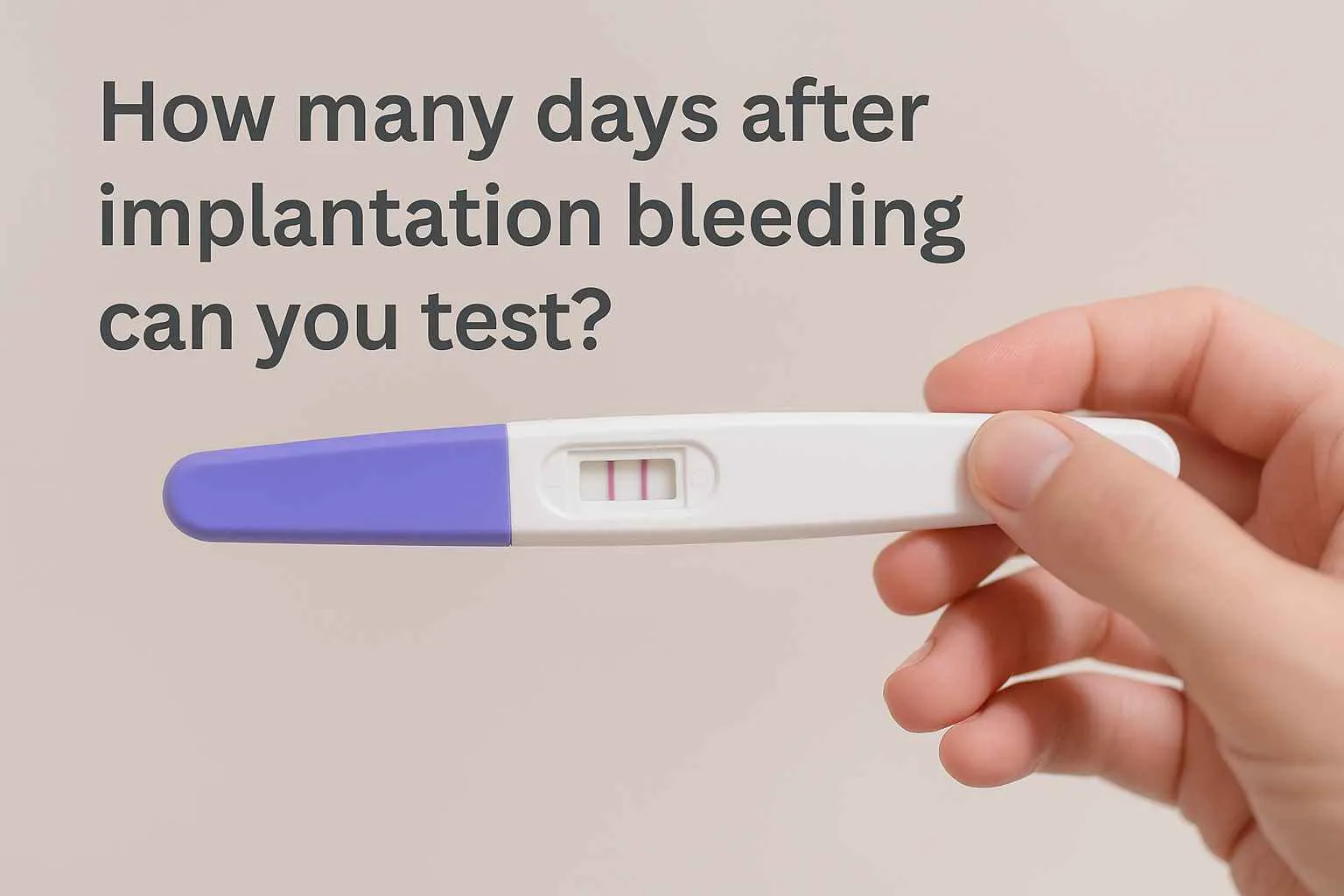Struggling with painful periods, hormonal imbalances, or trouble conceiving? You’re not alone; millions of women worldwide face these challenges, often due to either PCOS (Polycystic Ovary Syndrome) or endometriosis. Despite their similarities, these conditions are quite different and require unique approaches to diagnosis and treatment.
Understanding PCOS vs. Endometriosis is important for proper diagnosis and effective treatment In this blog, we’ll clearly break down the differences between PCOS and endometriosis, from symptoms and causes to treatments and fertility impact — so you can understand your body better or support someone you care about. Let’s get started.
PCOS vs Endometriosis: A Quick Comparison
Here’s a side-by-side breakdown of how PCOS and endometriosis differ across major features:
What is PCOS?
PCOS or Polycystic ovary syndrome is a hormonal disorder that affects the function of the ovaries. It is typically characterized by:
- Irregular or no menstrual periods
- High androgen levels (male hormones)
- Polycystic ovaries (several small cysts in one or both ovaries)
If you have polycystic ovary syndrome, you will likely have at least two of the above-mentioned issues. Moreover, it is possible to have this condition with no ovarian cysts.
What is Endometriosis?
Endometriosis is a disorder that occurs when tissue similar to the endometrium (uterine lining) grows outside the uterine cavity. The abnormal tissue grows in other areas, like:
- Fallopian tubes
- Ovaries
- Peritoneum
- Uterosacral ligaments
- Large and small intestines
- Appendix, and many other areas.
This tissue might thicken and bleed during menstruation, similar to the uterus tissue, causing pain, inflammation, and scarring.
Symptoms: PCOS vs Endometriosis
Both conditions share some symptoms and can be present without any symptoms. Understanding the difference in symptoms of both conditions is crucial to prevent misdiagnosis:
| Feature | PCOS | Endometriosis |
|---|---|---|
| Nature | Hormonal disorder | Chronic inflammatory condition |
| Hormonal affect | Increased androgens | Estrogen-driven tissue growth |
| Symptoms | Irregular or absent periods, excess hair growth, acne, infertility, and weight gain | Heavy or prolonged periods, severe menstrual pain, lower abdominal pain, pain during sex, and pain with urination and bowel movements |
| Causes | Genetic and environmental factors | Problems with menstrual flow |
| Diagnosis | Blood tests and ultrasound | Laparoscopy |
| Treatment | Hormonal birth control, insulin-sensitizing agents, and lifestyle changes | Pain relief, hormonal therapy, and surgical procedures |
| Fertility impact | Ovulation problems | Blocked fallopian tubes and inflammation |
How Common are these Conditions?
Both conditions are common among women of reproductive age.
PCOS:
- According to the American Medical Association, polycystic ovary syndrome affects 6-12% of women of reproductive age in the United States.
- Around 70% of the women remain undiagnosed around the world.
Endometriosis:
- Affects 9 million women during their reproductive years.
- Around 90% of women report pelvic pain, and 26% experience infertility issues.
Causes: What Triggers PCOS and Endometriosis?
The exact causes of both conditions are unknown. However, researchers found these to be the potential reasons:
PCOS Causes:
- Genetics: A family history of PCOS can make you prone to developing it. However, specific genes associated with this condition are still being studied.
- Hormonal imbalance: High levels of androgens, like testosterone, may be the contributing factor.
- Insulin resistance: This is where the body can't use insulin effectively, leading to high levels of insulin, which causes hormonal imbalance and PCOS.
- Chronic inflammation: Prolonged inflammation in the body can lead to high androgen levels, causing PCOS.
- Environmental Factors: Obesity, inactive lifestyle, and poor diet can also lead to PCOS.
Endometriosis Causes:
- Retrograde menstruation: Marked by a condition where menstrual blood that contains endometrial cells flows through the fallopian tubes into the pelvic cavity instead of out of the body.
- Immune system dysfunction: A problem when the body is unable to manage retrograde menstruation.
- Genetic factors: Can run in families, taking several genes to contribute to endometriosis risk.
- Hormonal imbalances: High levels of hormones, especially estrogen, can lead to the development and progression of endometriosis.
- Embryonic cell transformation: Hormones such as estrogen might convert embryonic cells into endometrial-like cells in areas away from the uterus, contributing to endometriosis.
- Post-surgery implantation: After some surgical procedures, like a hysterectomy, some endometrial cells may attach to the surgical area.
Risk Factors for PCOS and Endometriosis
Certain risk factors can increase the risk of developing both conditions, which puts women at risk of other diseases:
PCOS Risk Factors
- Family history
- Diabetes
- Obesity or being overweight
- Rapid weight gain
- Poor diet
- Sedentary lifestyle
Endometriosis Risk Factors
- Family history with first-degree relatives (mother, aunt, or sister) having the condition
- Early menstruation (before 11 years of age)
- Short menstrual cycles (less than 27 days)
- Heavy menstrual periods (lasting more than 7 days)
- Late menopause (after 50)
- Infertility
- Nulliparity (never given birth)
- Reproductive tract abnormalities
- Higher exposure to increased estrogen levels
Diagnosis of PCOS and Endometriosis
Doctors use several tests to diagnose and confirm whether you have PCOS, endometriosis, or both.
PCOS diagnosis includes:
- Physical exam: Checks for blood pressure, waist size, body mass index, and excess hair on the face, back, or chest.
- Medical history: The doctors check the family history to determine if PCOS is genetic.
- Pelvic exam: Look for cysts, any other abnormal growths, and enlarged ovaries.
- Ultrasound: Examine the ovarian cysts and check the uterine lining.
- Blood tests: Confirm increased androgen levels and check for hormones linked to an underactive thyroid to diagnose this condition.
Endometriosis diagnosis includes:
- Medical history: The healthcare professionals ask about pre-existing health issues and the family history of endometriosis.
- Pelvic exam: Check for masses and scars behind the uterus.
- Imaging tests: Ultrasound or MRI scan to detect cysts on the ovaries and nodules, indicating deep endometriosis.
- Blood tests: Measure the abnormal levels of specific proteins or hormones associated with endometriosis.
- Laparoscopy: Helps detect abnormal tissue growth in pelvic organs.
Can You Have PCOS and Endometriosis Together?
Although rare, you can have PCOS and endometriosis together, which may complicate diagnosis and treatment. A study shows that endometriosis occurs in 7% to 8% of women diagnosed with PCOS and is generally mild. If you have PCOS and experience any symptoms associated with PCOS and endometriosis, consult a gynecologist.
Treatment: PCOS vs Endometriosis
Though no cure is available for PCOS and endometriosis, several treatment options can manage the symptoms and fertility:
PCOS Treatment
The purpose is to stimulate ovulation and lower androgen levels. Treatment options include:
1. Medications:
- Birth Control Pills: Help regulate menstrual cycles, reduce hair growth, and prevent acne, especially if you are not planning a pregnancy.
- Anti-Androgens: Example spironolactone that can reduce unwanted hair growth and acne by blocking androgens' (male hormones) effects.
- Insulin-Sensitizing Medications: Example metformin to manage diabetes that helps enhance insulin resistance and maintain menstrual cycles.
- Ovulation Induction Medications: Examples include letrozole or clomiphene to stimulate ovulation if you are trying to conceive.
2. Lifestyle Changes:
- Healthy Diet: A diet rich in high-fiber, lean proteins, whole grains, and healthy fats, while limiting processed and sugary foods. This helps manage body weight and insulin resistance.
- Regular Exercise: Practice strength training and cardio to boost insulin sensitivity and overall health.
- Weight Management: Combining a well-balanced diet and regular exercise lowers androgen levels, improves insulin sensitivity, and regulates menstrual periods, helping manage body weight.
3. Surgical Option:
Laparoscopic Ovarian drilling
- If ovulation induction medicines don't work, this surgery helps stimulate regular ovulation.
- This procedure involves making small holes in the ovaries' outer layer to decrease testosterone production (that interferes with ovulation).
Endometriosis Treatment
The goal is to reduce pain and estrogen levels. Treatment options are:
1. Medications:
- Pain Medications: Example ibuprofen and naproxen to releive pain.
- Hormone Therapy: Hormonal birth control pills, GnRH analogues, or progestin-only drugs to reduce menstrual flow, reduce estrogen, and slow endometriosis tissue growth.
2. Surgical Options:
- Laparoscopic Surgery: Helps remove endometriosis tissue.
- Hysterectomy: Involves removal of the uterus (often recommended when other treatments are ineffective or severe pain is experienced).
- Oophorectomy: Involves the removal of both ovaries, which help alleviate estrogen and progesterone levels, the triggering factors for endometriosis tissue growth.
3. Lifestyle Changes
- A Balanced Diet: Consume whole grains, fruits, vegetables, and omega-3 fatty acid-rich foods, and limit processed foods, alcohol, and caffeine as they worsen symptoms.
- Regular Exercise: Practice moderate-intensity exercises like cycling, walking, swimming, or yoga for strengthening pelvic muscles and managing pain and dysfunctions.
- Stress Management: Engage in meditation, deep breathing, and mindfulness to relieve stress, and try massage and acupuncture therapy to relax pelvic muscles and manage pain.
Can Endometriosis and PCOS Cause Infertility?
Yes, both conditions can lead to infertility, making it difficult to conceive. Here's how:
- In PCOS, irregular menstrual cycles occur, meaning you can miss the ovulation period (a time when ovaries release an egg for fertilization). Ovulation is important for conception.
- In endometriosis, endometrial cells damage the uterine tubes or ovaries, which are the crucial reproductive organs. It also results in inflammation, which makes it more challenging to get conceive.
But do not be disheartened, as still some women can conceive with these conditions. These infertility treatments can help:
- Surgery: Remove blockages or repair the fallopian tubes and fix structural issues in the uterus.
- Intrauterine Insemination (IUI): Involves putting sperm directly into the uterus during the ovulation period, which increases the chances of conception.
- In Vitro Fertilization (IVF): Especially considered in case of severe infertility. This treatment involves fertilizing the egg (taken from the ovaries) by sperm (taken from the male partner) outside the body in a laboratory dish and then transferring the fertilized eggs (embryos) to the uterus.
Do PCOS and Endometriosis Cause Complications During Pregnancy?
Yes, both conditions can increase the chances of the following complications during pregnancy:
Endometriosis-induced complications:
- Miscarriage
- Preeclampsia
- Cesarean delivery
- Preterm birth
- Placental abruption
- Placenta previa
- Hemorrhage
- Premature rupture of membranes
PCOS-induced complications:
- Gestational diabetes
- Hypertensive disorders
- Birth of small-for-gestational-age babies
- Preterm delivery
- Miscarriage
- Stiilbirth
Note: Not all women will experience these complications. But proper care and treatment are important for a healthy pregnancy.
When to See a Doctor?
Consult your gynecologist if you experience:
- Pelvic pain
- Extremely painful periods
- Heavy menstrual bleeding
- Irregular menstrual cycles
- Pain during and after sexual intercourse
- Difficulty conceiving
Early diagnosis can improve quality of life and fertility outcomes.
Final Takeaway
PCOS and Endometriosis differ in certain symptoms, causes, and treatments. Understanding the nuances of PCOS vs endometriosis is important, especially since you can have both conditions at the same time. So, if you experience any symptoms of either, see a gynecologist for an accurate diagnosis and effective treatment. Early medical intervention can help address symptoms efficiently and improve your quality of life.
Disclaimer: This content is for informational purposes only and is not a substitute for professional medical advice, diagnosis, or treatment.
Frequently Asked Questions
What are the red flags of endometriosis?
The warning signs are painful periods that are exhausting and don't relieve with OTC pain medicines, pain during or after sexual intercourse, and infertility
What is mistaken as PCOS?
Due to overlapping symptoms, conditions like adrenal gland problems, thyroid issues, and ovarian cysts are mistaken for PCOS.
Is a PCOS belly soft or hard?
It feels firm as it is composed of excessive visceral fat. The PCOS belly also has a subcutaneous fat layer that can feel soft.
What is the life expectancy of a person with endometriosis?
Endometriosis does not reduce lifespan itself, but it can lead to complications like small bowel obstruction or ectopic pregnancy, which can be fatal if left untreated.
Can endometriosis cause weight gain?
No, it does not lead to weight gain, but its symptoms, like fluid retention, bloating, and hormonal fluctuations, can contribute to weight changes.
Reviewed by







